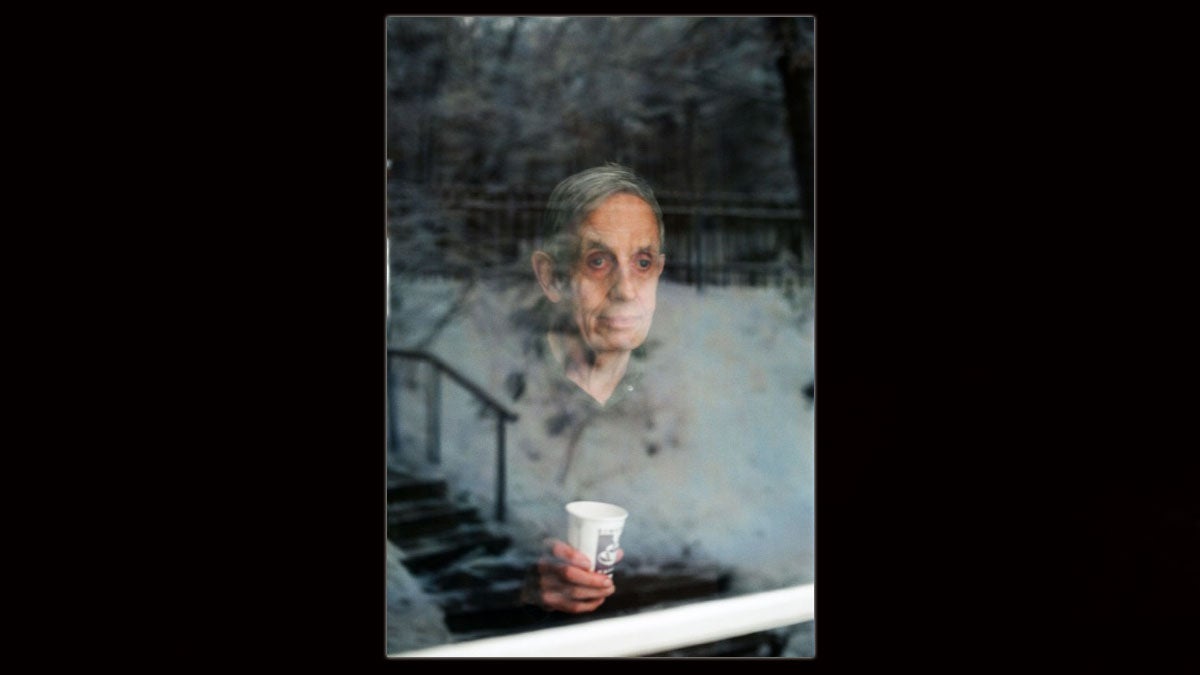Exhibit reminds us of Princeton University’s important contributions to how we live

John Nash's life inspired the book and movie A Brilliant Mind (Photo by Peter Badge)
When Princeton-area journalists tune in to announcements of Nobel Prize winners, they listen carefully: often, those who win Nobels are affiliated with Princeton University. There have been two in the past two years alone: Professor F. Duncan M. Haldane won the prize in physics in 2016, and Sir Angus Deaton won the Nobel Memorial Prize in Economic Sciences in 2015.
Whether Princeton is a magnet for those who make major contributions to humanity, or being at Princeton creates an environment that engenders such minds, the fact remains that 41 recipients of the Nobel Prize have a connection to Princeton University.
Since 1901 — the first year it was awarded, as established under the will of Swedish inventor Alfred Nobel — the Nobel Prize has been awarded 579 times to 911 people and organizations, with some receiving the Nobel Prize more than once. The prize is awarded in physics, chemistry, economic sciences, physiology or medicine, literature and peace. The first Nobel was awarded for the X-ray. Madame Marie Curie, the first woman to receive the award, won the prize for physics in 1903; and again, in chemistry, in 1911. Among the others to win more than once were Linus Pauling (chemistry, 1954, and peace, 1962); John Bardeen (physics, 1956 and 1972); and Frederick Sanger (chemistry, 1958 and 1980).
The youngest Nobel recipient ever was Malala Yousafzai of Pakistan, who, at the age of 17, was shot in the head by the Taliban in 2012 and went on to campaign for the rights of girls to attend school and be educated. She won the Peace Prize in 2014. Before Yousafzai, Lawrence Bragg, who won the prize at the age of 25 in 1915, had held the record for youngest recipient.
Princeton’s Woodrow Wilson School of Public and International Affairs boasts four faculty members who have received the economics prize: Deaton (2015), Paul Krugman (2008), Daniel Kahneman (2002) and Sir W. Arthur Lewis (1979). The School’s namesake, Woodrow Wilson (Class of 1879), won the Nobel Prize for Peace in 1919.
The brilliant minds
Through August 17, the Bernstein Gallery at the Woodrow Wilson School is featuring photographs, by Peter Badge, of 30 Nobel Laureates who have been Princeton University faculty, staff or alumni. Presented through the courtesy of the Foundation Lindau Nobel Laureate Meetings, the exhibit focuses on Laureates from the Woodrow Wilson School, with a section on John Forbes Nash Jr. Badge and Nash developed a friendship during the shoots.
Nash, who was a senior research mathematician at Princeton and whose theories are widely used in economics, made fundamental contributions to game theory, differential geometry and the study of partial differential equations. He shared the Nobel Memorial Prize in Economic Sciences in 1994 with game theorists Reinhard Selten and John Harsanyi.
At one point, Nash was known as the shadowy “Phantom of Fine Hall,” who would scribble arcane equations on blackboards in the middle of the night. In 1959, just after earning tenure at M.I.T, Nash began showing signs of mental illness, and spent several years at psychiatric hospitals where he was treated for paranoid schizophrenia. His condition improved in the 1970s, allowing him to return to academic work by the mid 1980s. After winning the Nobel Prize, Nash entered a period of renewed activity and confidence and greater control of his mental state. His struggles with mental illness and his recovery became the basis for Sylvia Nasar’s biography, A Beautiful Mind, followed by a film of the same name, with Russell Crowe in the lead role.
Nash came to Princeton to earn his Ph.D. in mathematics. A resident of Princeton Junction for most of his life, Nash, 86, and his wife, Alicia, 82, died in an automobile accident in 2015, in a taxi on their way home from Norway, where Nash had received the Abel Prize from the Norwegian Academy of Science and Letters, one of the most prestigious honors in mathematics. The prize recognized his seminal work in partial differential equations, which are used to describe the basic laws of scientific phenomena. The Abel Prize was considered a long-overdue acknowledgment of his contributions to mathematics.
Badge’s photographs capture Nash riding the Dinky, from Princeton to his home in Princeton Junction, wearing the gray knit cap he was often seen in in colder weather, walking along the roadside near his home. Another image catches him in a pensive mood through a glass window, reflecting a snow-covered campus, with a paper coffee cup in his hand. Those who frequently encountered Nash and his family, eating in restaurants or living life in ordinary ways, will feel a sense of nostalgia seeing these.
The Lindau Nobel Laureate Meetings, whose foundation sponsored the exhibit, foster exchange between scientists of different generations, cultures and disciplines. Once every year, since 1951, on the island of Lindau along Lake Constance in southern Germany, 30 Nobel Laureates convene to meet the next generation of leading scientists: hundreds of undergraduates, Ph.D. students and post-doc researchers from all over the world. How was the universe formed? Can cell biology fight disease? These are among the topics discussed. It’s where Badge made many of his photographs.
Badge’s black-and-white photos not only reveal the personality of the portrayed laureates but generate recognition for their scientific, literary or humanitarian achievements.
Related story: Remembering John Nash
__________________________________________________________
The Artful Blogger is written by Ilene Dube and offers a look inside the art world of the greater Princeton area. Ilene Dube is an award-winning arts writer and editor, as well as an artist, curator and activist for the arts.
WHYY is your source for fact-based, in-depth journalism and information. As a nonprofit organization, we rely on financial support from readers like you. Please give today.





